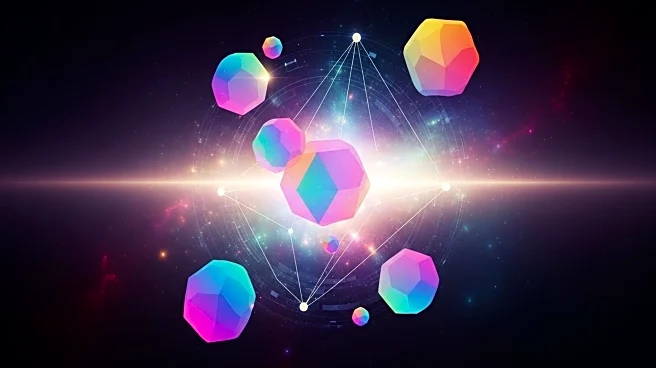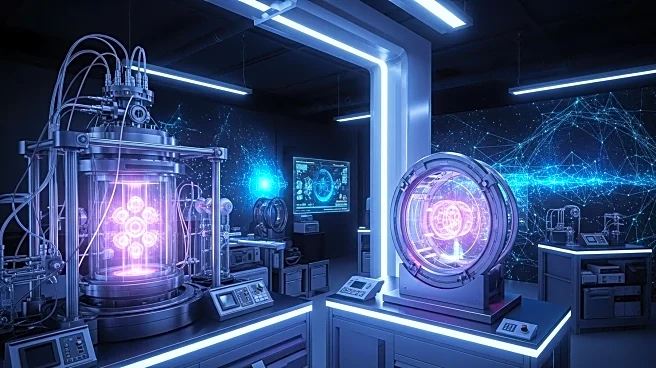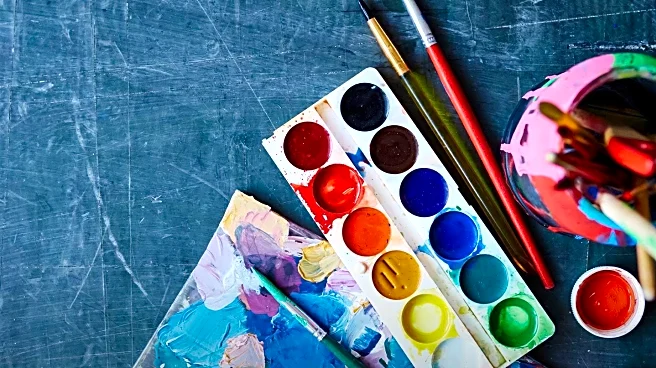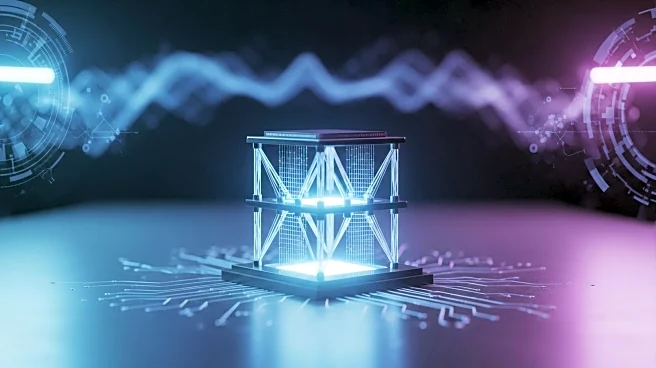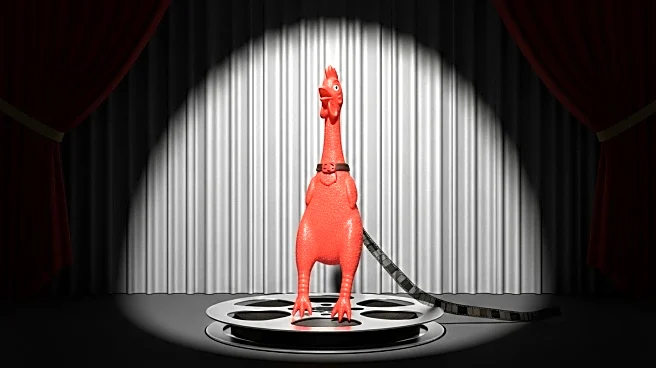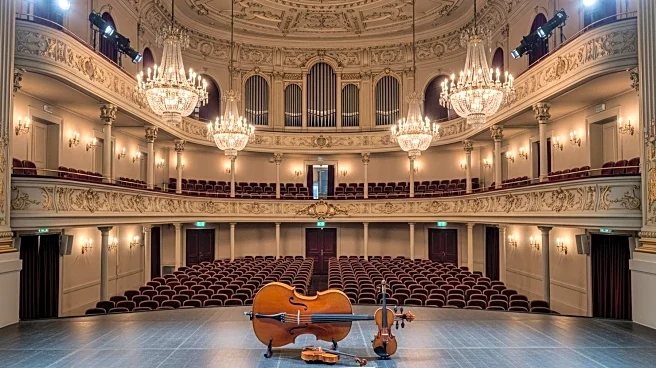What's Happening?
Quantum art is emerging as a novel intersection between art and quantum physics, challenging traditional boundaries and offering new forms of creative expression. Artists like Libby Heaney and David Young are leveraging quantum principles such as entanglement and superposition to create artworks that defy conventional definitions. Heaney's work, for instance, uses quantum technology to produce fluid, unfixed forms that evoke the irrational and disorienting nature of quantum phenomena. Similarly, Young's 'Quantum Drawings' utilize data from quantum computers to generate unpredictable and mysterious visual patterns. This movement is gaining traction among artists who are drawn to the non-binary and ever-shifting nature of quantum mechanics, using it as a tool for rethinking boundaries and exploring new narratives.
Why It's Important?
The rise of quantum art signifies a paradigm shift in how art can be created and perceived, offering a unique lens through which to explore complex scientific concepts. By integrating quantum mechanics into artistic practices, artists are not only expanding the possibilities of visual expression but also fostering a deeper understanding of quantum theory among the public. This fusion of art and science has the potential to democratize access to quantum concepts, making them more intuitive and engaging. As quantum computing becomes more prevalent, the artistic exploration of quantum phenomena could influence broader cultural and technological conversations, encouraging innovation and creativity in both fields.
What's Next?
As quantum art continues to develop, it is likely to attract more attention from both the art world and the scientific community. Institutions may begin to host exhibitions and symposiums dedicated to quantum art, providing platforms for artists and physicists to collaborate and share insights. The ongoing advancements in quantum computing could further enhance the capabilities of artists working in this domain, enabling more sophisticated and complex creations. Additionally, as public interest in quantum technologies grows, quantum art could play a crucial role in shaping perceptions and understanding of these emerging technologies.
Beyond the Headlines
Quantum art challenges traditional notions of reality and perception, inviting viewers to reconsider their understanding of the world. It raises ethical and philosophical questions about the nature of existence and the role of technology in shaping human experience. By embracing the unpredictability and randomness inherent in quantum mechanics, artists are pushing the boundaries of creativity and encouraging audiences to engage with the unknown. This movement may also inspire new forms of interdisciplinary collaboration, as artists, scientists, and technologists work together to explore the possibilities of quantum art.
